I recently bought a Swiss Army knife for myself and it came with a bonus single bladed knife, so I'm going to try teaching Blaze to use it safely. The best way to get him to remember the safety rules, will be to include as many senses as possible in the lessons (just telling him the rules often doesn't work with his audio-processing issues), so I am taking pictures of each step of this process, so we can look over them later, as we reread the rules.
1. A POCKET KNIFE IS A TOOL, NOT A TOY ( I have made Blaze repeat this back to me several times today)
2. Make a safety circle. To do this, hold the closed knife in your hand and extend your arm so it's straight. Continue to hold the knife out like that as you turn in a circle. This is your safety circle. There should be no people and nothing you can hit within that circle. I found it helpful to mark out as much of that circle as I could in the dirt to remind myself where not to stand while Blaze was working.
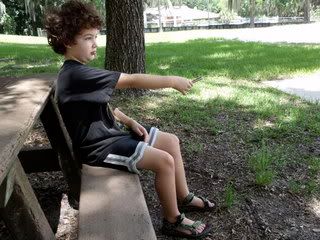
3. If you are right-handed, hold the knife in your left hand and open the blade using your right hand to open the blade, with your right thumbnail in the indent in the blade. If you are left-handed reverse these directions, so you are holding the knife handle in you right hand. Make sure the blade is fully extended and snaps into a locked-open position.
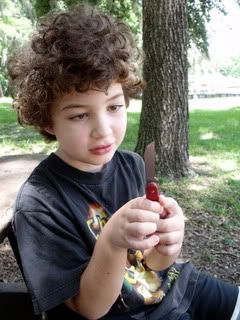
I chose to make soap carving our first lesson in knife usage, so we used a pencil to draw an outline of the animal we would each carve on a bar of soap and then continued the lesson.
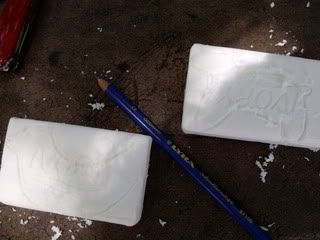
4. Hold the knife by the handle. Do not press against the blade.
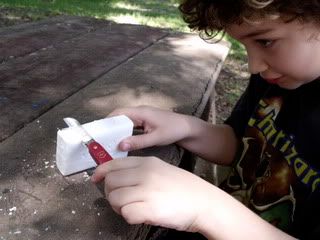
5. Always cut away from your body and do not apply much force. You should be removing thin shavings from the soap, not huge chunks.
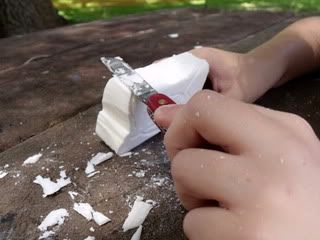
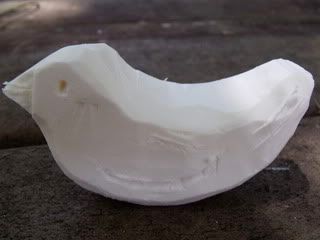

6. When you have finished your project, close your knife.
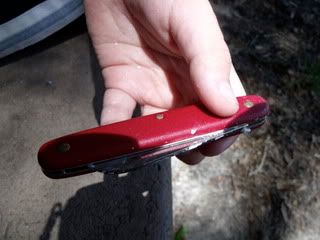
7. Never carry an open knife in your hand
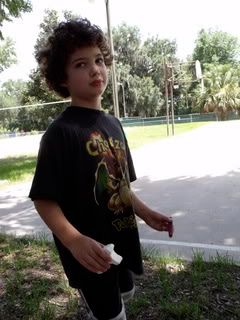
8. Keep your knife clean and dry
9. Do not hand an open knife to another person. Close it carefully before handing it to someone. If you can't close the blade, lay it down on the table.
10. Put knife away in a safe place. In Blaze's case, I will be holding onto it in between uses.
11. Never NEVER never throw the knife!
12. Make sure the knife blade is sharp. More people get hurt using dull knives than sharp knives. This is because more force will be used to push a dull knife, making it more likely to slip.
Here is a link to a very useful video about how to sharpen a knife:
Knife Sharpening With a Whetstone
I want to make this perfectly clear, I do not think there is a right age at which sharp tools should be introduced to children. Each parent knows their own child better than anybody else, and knows when their child is mature enough to be responsible. For each of my children that was a different age. Being mature enough, also does not mean there won't be accidents, so adult supervision is very important! Right now, I have a small cut from a kitchen knife healing on the tip of my left index finger. If after all these years, I still get cuts, of course my kids will too, but following the safety rules may lessen the severity.
Learning how to use tools properly is so important! Let me tell you a story...
Ula was about 11 years old when she was helping her dad do yard work, while I was at work one day. They had been cutting grass and trimming the bushes and weeds along the backyard fence. Her dad finished using a hatchet and laid it down, while he went to do something else. Ula saw the hatchet laying there and decided to be helpful by cutting apart a big old stump in the back of the yard. Her first swing bounced off the stump, but she tried again. The second swing, went into her leg. She required several stitches and it left a scar that she tells me still bothers her when the weather changes.
After that, her dad taught her how to use a hatchet safely. I'm not saying that she hasn't tried taking off other limbs by doing dumb and dangerous things since then, but none of the more recent ones have been with a hatchet.

4 comments:
Did you have to tell everyone the hatchet story? I am now very good with a hatchet by the way. I required more then several stitches by the way, it was 24, RESPECT THE BLADES.
I still have my first pocket knife, I have sharpened it some many times that the blade is now paper thin, it was a cheap one to start with. I think it might be time to get a new one but since I worked so hard to save for that one I don't think I will ever get rid of it.
Yikes...the hatchet story...Ula!!!
Glad it only took 24 stitches to put you back together again.
You are doing a good thing teaching safety so well to Blaze.
I read your post, thinking maybe it is time I finally let Trent have a knife, as long as I taught him your careful instructions...and then I got to the hatchet story. ;) It made me think twice. Yikes!
Don't risk your life safety first. You should know learn knife safety tips. Thank you very much for sharing this post. Keep it up.
Post a Comment